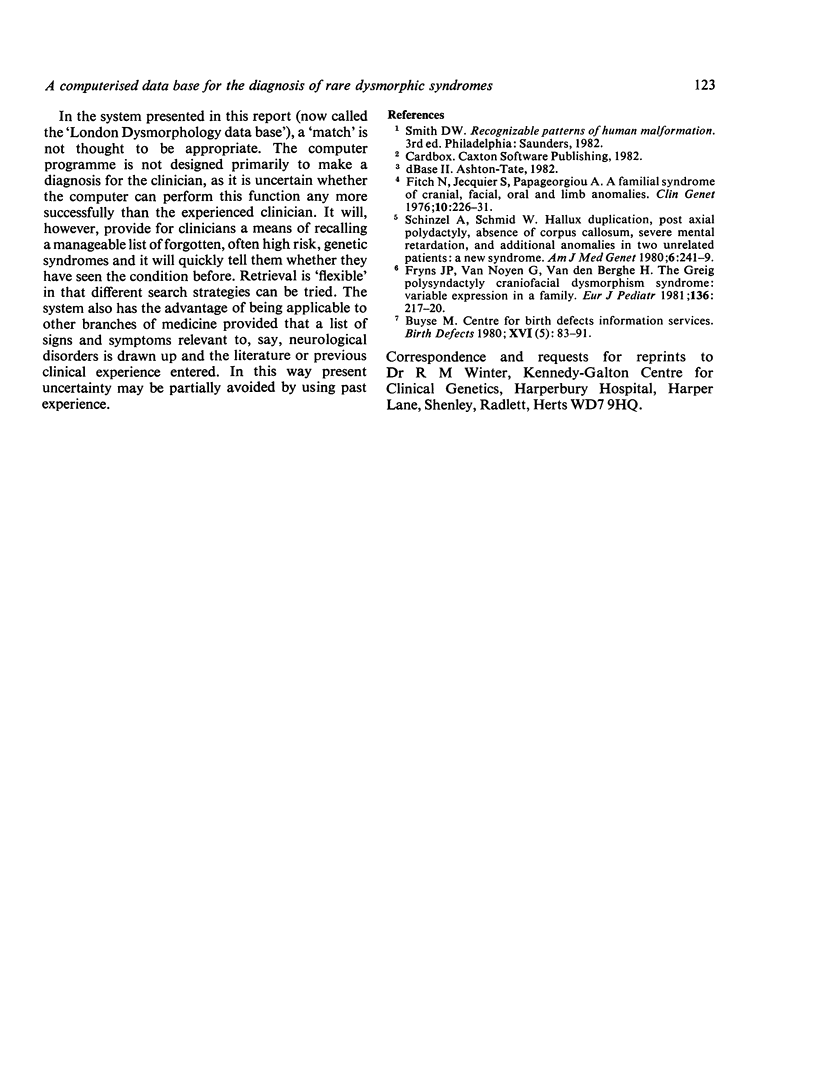Abstract
A system is described for the computerised storage and retrieval of information on rare dysmorphic syndromes. The clinician can ask a microcomputer for a list of syndromes with any logical combination of physical abnormalities. A descriptive title and full references are also provided on request. Similar systems would be applicable to other medical specialties.
Full text
PDF


Selected References
These references are in PubMed. This may not be the complete list of references from this article.
- Buyse M. Center for Birth Defects Information Services. Birth Defects Orig Artic Ser. 1980;16(5):83–91. [PubMed] [Google Scholar]
- Fitch N., Jequier S., Papageorgiou A. A familial syndrome of cranial, facial, oral and limb anomalies. Clin Genet. 1976 Oct;10(4):226–231. doi: 10.1111/j.1399-0004.1976.tb00039.x. [DOI] [PubMed] [Google Scholar]
- Fryns J. P., Van Noyen G., Van den Berghe H. The Greig polysyndactyly craniofacial dysmorphism syndrome: variable expression in a family. Eur J Pediatr. 1981 May;136(2):217–220. doi: 10.1007/BF00441928. [DOI] [PubMed] [Google Scholar]
- Schinzel A., Schmid W. Hallux duplication, postaxial polydactyly, absence of the corpus callosum, severe mental retardation, and additional anomalies in two unrelated patients: a new syndrome. Am J Med Genet. 1980;6(3):241–249. doi: 10.1002/ajmg.1320060308. [DOI] [PubMed] [Google Scholar]


